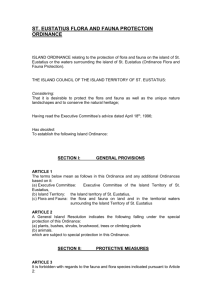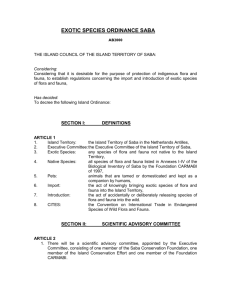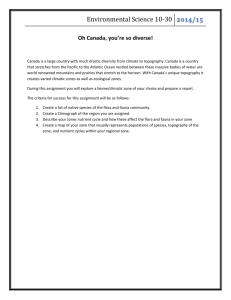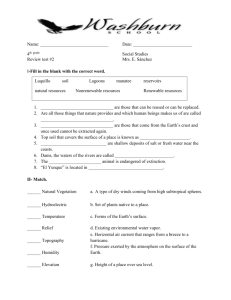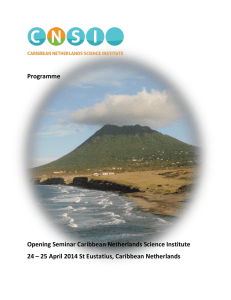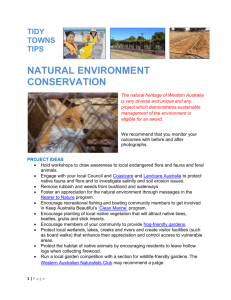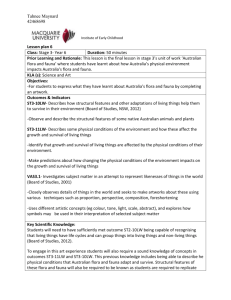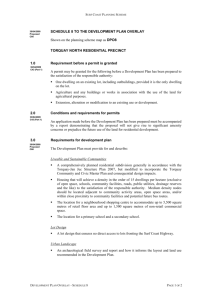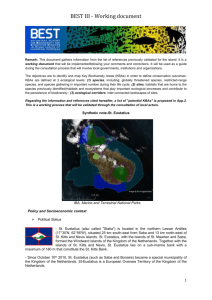memorandum of explanation
advertisement
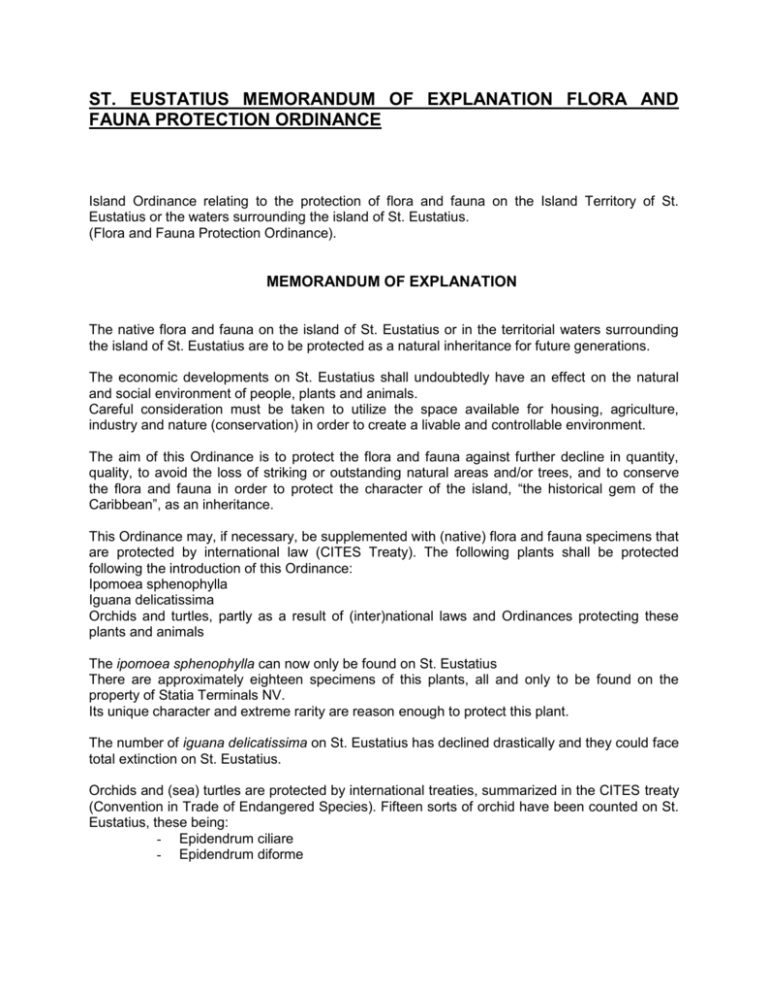
ST. EUSTATIUS MEMORANDUM OF EXPLANATION FLORA AND FAUNA PROTECTION ORDINANCE Island Ordinance relating to the protection of flora and fauna on the Island Territory of St. Eustatius or the waters surrounding the island of St. Eustatius. (Flora and Fauna Protection Ordinance). MEMORANDUM OF EXPLANATION The native flora and fauna on the island of St. Eustatius or in the territorial waters surrounding the island of St. Eustatius are to be protected as a natural inheritance for future generations. The economic developments on St. Eustatius shall undoubtedly have an effect on the natural and social environment of people, plants and animals. Careful consideration must be taken to utilize the space available for housing, agriculture, industry and nature (conservation) in order to create a livable and controllable environment. The aim of this Ordinance is to protect the flora and fauna against further decline in quantity, quality, to avoid the loss of striking or outstanding natural areas and/or trees, and to conserve the flora and fauna in order to protect the character of the island, “the historical gem of the Caribbean”, as an inheritance. This Ordinance may, if necessary, be supplemented with (native) flora and fauna specimens that are protected by international law (CITES Treaty). The following plants shall be protected following the introduction of this Ordinance: Ipomoea sphenophylla Iguana delicatissima Orchids and turtles, partly as a result of (inter)national laws and Ordinances protecting these plants and animals The ipomoea sphenophylla can now only be found on St. Eustatius There are approximately eighteen specimens of this plants, all and only to be found on the property of Statia Terminals NV. Its unique character and extreme rarity are reason enough to protect this plant. The number of iguana delicatissima on St. Eustatius has declined drastically and they could face total extinction on St. Eustatius. Orchids and (sea) turtles are protected by international treaties, summarized in the CITES treaty (Convention in Trade of Endangered Species). Fifteen sorts of orchid have been counted on St. Eustatius, these being: - Epidendrum ciliare - Epidendrum diforme - Epidendrum kraenzlinii Epidendrum secundum Erythrodes hirtella Erythrodes plantaginea Brassavola cucullata Polystachya concreta Oncidium urophyllum Prescottia stachyodes Spiranthes elata Spiranthes lanceolate Jacqquiniella globosa Tetramiera canaliculata Liparis nervosa The Executive Committee give the named plants and animals to the Department of Public and Environmental Health of Curaçao in order to place them on the CITES III treaty list. Linking Island Ordinances to international law clearly shows the vision and policy of the Executive Committee and the Island Council. This memorandum of explanation is an initiative to emphasize the importance of protecting the environment and its surroundings. The Lieutenant Governor
